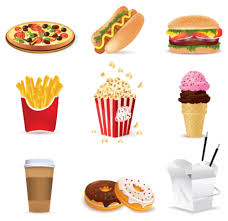Junk foods are full of empty calories with little nutritional value. Junk food can contribute to obesity, diabetes and other chronic diseases.
So why do we crave these foods and find them hard to resist?
There’s a staggering amount of science being utilised by junk food manufacturers in order to create food that is irresistible to all but the strongest willed. If we understand the science behind junk food, we may just be able to outsmart it and resist the urge to eat it.
Melt in the mouth foods: Many fast foods have been engineered to have ‘vanishing caloric density’. The less time food spends in the mouth before it is swallowed, the more rewarding the eating experience. This confuses the body into thinking fewer calories have been eaten as it spends very little time in the mouth and subconsciously encourages overeating. Examples of ‘melt in the mouth’ foods include; ice cream, cheese puffs and popcorn.
No specific taste or aroma: We are programmed to become tired or bored with food if we eat too much of one taste or aroma. To get around this, junk food is often manufactured to be either deliberately bland tasting, such as in vanilla ice cream or lightly salted crisps, or to contain a highly complex array of tastes and aromas that are not discernible and therefore confuse the brain. Eating these foods can override sensory burnout allowing us to eat more.
Sensory contrasts while eating: Our brain releases endorphins when we eat foods with new and exciting sensory contrasts in tastes, temperatures, textures and visual contrasts. Foods that are both sweet and salty, or crunchy and smooth are designed to give us a thrill and intensify the pleasure of eating them.
Food memories: The smells and tastes of certain foods are almost universally loved and induce cravings when we come across them. The smell of bacon is a prime example for many people. Food companies covertly use many of these smells and tastes within their offerings at once, often without you being able to consciously discern that they are there, thus promoting strong cravings.
Its packed with energy: Our brains are wired to prefer high calorie foods. This is a survival mechanism for when food is scarce, but it is detrimental to health in a society such as ours, where food is largely abundant and easily accessible. Fat is the most calorie dense of nutrients and our brains produce a pleasure response whenever we eat it. Fast food manufacturers look to create foods with close to 50% fat content. This fat content increases their desirability and activates pleasurable ‘reward’ pathways in the brain after eating.
They condition the brain towards addiction: After eating, the constituents of fast food go on to activate many of the same ‘reward’ and pleasure pathways in the brain as recreational drugs. This can create a preference for these foods and encourage addictive behaviour.
Encourage saliva production: We taste food better when there is enough saliva in the mouth to help liberate the flavour compounds and moisten the food ready to swallow. Junk food often contains added acids such as lactic or citric acid. These acids promote saliva production and enhances the taste.
Huge portions: Energy dense junk foods become even more desirable if given in larger than normal portions. If you have a large tub of popcorn or ice-cream in front of you, mindless eating is encouraged, and you will eat on average 34% more than you would with a more normal portion.
Casin: Fast foods often contain the milk protein casin. Casin is broken down during digestion into morphine like molecules called casomorphins that can make the food more addictive. These molecules inhibit the gut hormone enterostatin. Enterostatin functions to tell the brain when we have eaten enough fat. So foods with casin mean you can eat more before you feel full.
They have a high Glycemic Index (GI). High GI foods get broken down quickly by the body into simple sugars which are quickly utilised by the body for energy. This is far more rewarding for the brain than slow release, low GI foods, so the body is wired to crave these ‘instant gratification’ foods over far healthier alternatives.

